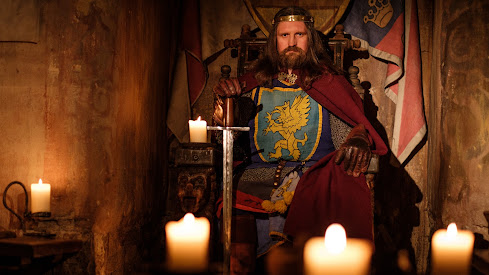King Arthur
Ruler Arthur is one of our most famous saints: honorable yet defective, an extraordinary pioneer (yet maybe not a particularly incredible adjudicator of character), a courageous warrior who kicked the bucket battling for a respectable yet waste of time. There are tempting parts of proof that the amazing figure might be founded on a genuine lord who battled to shield Britain against Anglo-Saxon trespassers around the fifth sixth century. Be that as it may, would he say he was a Celt, a Roman, a Briton or an Anglo-Saxon, and did he truly take on the Anglo-Saxons?
On the off chance that King Arthur existed by any means, we will presumably never know reality with regards to what he was truly similar to. The sources that portray him were composed hundreds of years after the fact, when his life had gone to legend. However, what suffers about King Arthur are the numerous accounts that individuals created about him all through the Middle Ages. a portion of these compositions that added to the development of Arthur's legend.
Two of the soonest records of King Arthur were by William of Malmesbury (b. c. 1090, d. c. 1142) and Geoffrey of Monmouth (d. 1154/55), Anglo-Norman pastors who composed authentic accounts in Latin in the main portion of the twelfth century. Geoffrey's History of the Kings of Britain depicted Arthur at the start as a courageous and fearsome youthful champion, who wears his fight formal attire and losses numerous adversaries without any assistance. He set up Arthur's standing as an amazing Christian ruler who encapsulates the characteristics of liberality and culture, characteristics exhibited in the most punctual enduring picture of Arthur in a composition, where he is displayed as a tall, admired figure with a facial hair growth and a long robe.
As numerous middle age recorders did, Geoffrey presented components from legend. For him Arthur had a place with an admired past, inhabited with winged serpents and the gallant knights and upright ladies of the grand Camelot. Interestingly, William of Malmesbury was condemning of the 'affectionate tales which the Britons were wont to tell', and for him Arthur was just a 'excellent' and 'warlike' pioneer. His Deeds of the English Kings starts with the Anglo-Saxon intrusions in 449 and recounts Arthur's courageous loss of 900 trespassers. This duplicate of his work from Saint Alban's Abbey, is finished with initials containing a winged serpent, a lion and different animals, maybe referring to Arthur's mysterious affiliations
Later in the twelfth century, creators on the two sides of the channel, including Wace, Layamon and most strikingly Chretien de Troyes, adjusted the Arthurian legend, adorning it with stories of Arthur's initial schooling by Merlin, his gallant endeavors with Lancelot, Gawain and the knights of the Round Table, and his bound sentiment with Guinevere.
Wace presented the Round Table in his Roman de Brut, finished in 1155, and his words 'Arthur .. bore himself so rich and respectable… [and the] Round Table was appointed …. At this table sat Britons, Frenchmen, Normans, Angevins, Flemings, Burgundians and Loherins'. Here Wace carries Europe's chiefs to his table, depicting Arthur as a motivating and reasonable ruler, yet a worldwide legislator of note.
Needing to free his realm of the abhorrent Mordred, his child brought about by inbreeding, Arthur tracks down every one of the youngsters brought into the world around the same time and sets them untied in a boat, sending them to an unavoidable demise by suffocating.
Every one of the anecdotes about King Arthur and his court were united in the mid thirteenth century in the great exposition adaptation known as the Vulgate Cycle. It was a middle age artistic wonder, getting by in around eighty original copies from the thirteenth to the fifteenth century.
The bound circle of drama between Arthur, Guinevere and Lancelot prompts the lord's definitive destruction and he is viewed as artless, however not irreproachable in the circumstance that creates. In the picture above, set at Camelot, he is the benevolent and loyal ruler (on the right), situated alongside Guinevere, their arms weaved, and in another scene from the story (on the left), Lancelot and Guinevere lead their interests despite his good faith
Despite the fact that we won't ever know who Arthur truly was, the versatility of his legend permitted him to stay pertinent all through the Middle Ages and to keep on catching individuals' creative mind right up 'til the present time.




Comments
Post a Comment